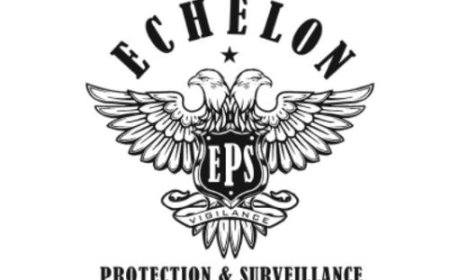How to Set Up Linux Dual Boot
How to Set Up Linux Dual Boot Dual booting Linux alongside an existing operating system—typically Windows—allows users to enjoy the flexibility, security, and customization of Linux without abandoning their current environment. Whether you're a developer seeking a robust terminal environment, a student exploring open-source tools, or an enthusiast curious about Linux’s capabilities, dual booting p
How to Set Up Linux Dual Boot
Dual booting Linux alongside an existing operating system—typically Windows—allows users to enjoy the flexibility, security, and customization of Linux without abandoning their current environment. Whether you're a developer seeking a robust terminal environment, a student exploring open-source tools, or an enthusiast curious about Linux’s capabilities, dual booting provides a powerful way to experience both worlds on a single machine. Unlike virtual machines, which consume system resources and may lack full hardware access, dual booting gives Linux native performance and direct control over your hardware. This guide walks you through every step of setting up a Linux dual boot, from planning and preparation to final configuration and troubleshooting. By the end, you’ll have a secure, stable, and efficient dual-boot system tailored to your needs.
Step-by-Step Guide
Step 1: Backup Your Data
Before making any changes to your system’s partition structure, creating a full backup of your important files is non-negotiable. Even the most carefully executed dual-boot installations carry a risk of data loss due to power failures, human error, or unexpected software conflicts. Use an external hard drive, cloud storage, or network-attached storage to back up documents, photos, videos, and any other critical data. If you’re using Windows, you can use the built-in Backup and Restore utility or third-party tools like Macrium Reflect or Clonezilla. On Linux, rsync or Deja Dup are reliable options. Verify that your backup is complete and accessible before proceeding.
Step 2: Choose Your Linux Distribution
Linux offers dozens of distributions (distros), each with unique goals, interfaces, and target audiences. For beginners, Ubuntu, Linux Mint, and Fedora are excellent starting points due to their user-friendly interfaces and strong community support. Ubuntu, in particular, is widely recommended for dual booting because of its excellent hardware compatibility and extensive documentation. Advanced users might prefer Arch Linux for maximum control or Pop!_OS for optimized hardware support on modern laptops. Consider your use case: if you need enterprise-grade stability, choose CentOS Stream or RHEL; if you want the latest software, try Fedora. Download the ISO file of your chosen distro from its official website—never from third-party mirrors to avoid malware.
Step 3: Create a Bootable USB Drive
To install Linux, you need a bootable USB drive containing the installation media. You’ll need a USB flash drive with at least 8GB of storage (16GB recommended). On Windows, use Rufus—a free, open-source tool that automatically detects your ISO and configures the USB correctly. Launch Rufus, select your USB drive under “Device,” click “SELECT” to choose your downloaded Linux ISO, and ensure the partition scheme matches your system: use GPT for UEFI systems and MBR for legacy BIOS. Click “START” and wait for the process to complete. On macOS, use the Terminal with the dd command or Etcher, a cross-platform GUI tool. On Linux, use dd, balenaEtcher, or Startup Disk Creator. Always verify the integrity of the USB after creation using the checksum (SHA256) provided on the Linux distribution’s download page.
Step 4: Free Up Disk Space for Linux
Linux requires dedicated storage space, which must be created by shrinking your existing Windows partition. Open the Windows Disk Management tool by pressing Win + X and selecting “Disk Management.” Locate your main drive (usually C:), right-click it, and choose “Shrink Volume.” Windows will calculate the maximum available space; enter the amount you wish to free. For a comfortable Linux installation, allocate at least 30GB—50GB or more is recommended if you plan to install software, games, or development tools. Avoid shrinking below the minimum recommended size, as this can lead to performance issues. Once shrunk, you’ll see unallocated space labeled “Unallocated” on the disk map. Leave this space untouched; it will be used during Linux installation.
Step 5: Disable Fast Startup and Secure Boot (If Necessary)
Windows Fast Startup is a hybrid shutdown feature that can interfere with Linux’s ability to access the NTFS partition. To disable it, go to Control Panel > Power Options > Choose what the power buttons do > Change settings that are currently unavailable. Uncheck “Turn on fast startup” and save changes. Reboot your system. Additionally, some Linux distributions have compatibility issues with UEFI Secure Boot. If you encounter boot errors during installation, enter your system’s UEFI/BIOS settings by restarting and pressing F2, F12, DEL, or ESC (varies by manufacturer). Navigate to the Security or Boot tab and disable Secure Boot. Note: Some newer distros like Ubuntu 22.04+ support Secure Boot, so check your distro’s documentation before disabling it. If you’re unsure, leave it enabled and proceed—many systems will work fine.
Step 6: Boot from the USB Drive
Insert your bootable USB drive and restart your computer. As the system boots, press the boot menu key (commonly F12, ESC, or F10) to access the boot device selection menu. Choose your USB drive from the list. If the boot menu doesn’t appear, enter UEFI/BIOS settings and change the boot order to prioritize the USB drive. Save and exit. The Linux installer will load—this may take a few minutes. You’ll see a welcome screen with options like “Try Linux” or “Install Linux.” Select “Install Linux” to begin the setup process. Avoid selecting “Try Linux” unless you’re testing hardware compatibility, as changes made in live mode won’t persist.
Step 7: Configure Installation Settings
The installer will prompt you to select your language, keyboard layout, and Wi-Fi connection (if available). Proceed to the installation type screen. Here, you must choose “Install alongside Windows Boot Manager” if the option appears. This is the safest and most automated method for dual booting. The installer will detect your Windows partition and the unallocated space you created earlier, then automatically partition the free space for Linux. If this option doesn’t appear (common on older systems or custom setups), choose “Something else” to manually configure partitions.
Step 8: Manual Partitioning (Advanced Users)
If you select “Something else,” you’ll see a list of your disk partitions. Identify the unallocated space you created earlier. Click on it and select “Add.” First, create a root partition: set size to at least 25GB, type as “Ext4 journaling file system,” and mount point as “/”. This is where the Linux operating system will be installed. Next, create a swap partition: size equal to your RAM (e.g., 8GB for 8GB RAM) or 1.5x your RAM if you have less than 4GB. Set type as “swap area.” For modern systems with 16GB+ RAM, swap is optional but still recommended for hibernation. Finally, create a home partition (optional but recommended): allocate remaining space, set type as “Ext4,” and mount point as “/home.” This separates your personal files from the system files, making future upgrades or reinstallation safer. After creating partitions, confirm the bootloader installation location is set to the EFI System Partition (ESP)—usually /dev/nvme0n1p1 or /dev/sda1. Never install the bootloader to a partition; always choose the disk itself (e.g., /dev/nvme0n1, not /dev/nvme0n1p1).
Step 9: Complete the Installation
After partitioning, the installer will ask for your name, computer name, username, and password. Choose a strong password and avoid using the same one as your Windows account for security. Select whether to encrypt your home folder (optional, recommended for sensitive data). The installer will now copy files and configure the system—this may take 10 to 30 minutes. Once complete, you’ll be prompted to restart. Remove the USB drive when instructed and press Enter. Your system will reboot.
Step 10: Select Your Operating System at Boot
Upon rebooting, you should see the GRUB (Grand Unified Bootloader) menu, which lists both Linux and Windows as boot options. GRUB automatically detects Windows during installation and adds it to the boot menu. Use the arrow keys to select your desired OS and press Enter. By default, GRUB will boot into Linux after 10 seconds if no selection is made. You can customize this timeout later by editing the GRUB configuration file in Linux (see Best Practices). If Windows doesn’t appear in the menu, boot into Linux and run sudo update-grub in the terminal—this rescans for installed operating systems and rebuilds the GRUB menu.
Best Practices
Always Use UEFI Mode
Modern systems use UEFI instead of legacy BIOS. Ensure both Windows and Linux are installed in UEFI mode for compatibility. Mixing UEFI and legacy boot modes causes boot failures. Check your system’s firmware settings before installation. If Windows was installed in UEFI mode (which it almost certainly was on systems from 2015 onward), Linux must be too. The presence of an EFI System Partition (ESP) on your disk confirms UEFI installation. This partition is typically 100–500MB in size and formatted as FAT32. It holds bootloader files for all installed operating systems.
Use Separate Partitions for /, /home, and Swap
Separating your root (/), home (/home), and swap partitions enhances system stability and simplifies maintenance. The root partition holds the OS and applications. The home partition stores your personal files, configurations, and downloads. By isolating them, you can reinstall Linux without touching your documents or settings. Swap, while less critical on systems with ample RAM, remains useful for hibernation and memory overflow. For SSD users, consider disabling swap or using zram (compressed RAM swap) to reduce wear.
Keep Windows Updated
Windows updates can sometimes overwrite the GRUB bootloader, especially after major feature updates. If your system boots directly into Windows after an update, don’t panic. Boot from your Linux USB again, select “Try Linux,” open a terminal, and run:
sudo mount /dev/nvme0n1pX /mnt Replace X with your Linux root partition
sudo grub-install --boot-directory=/mnt/boot /dev/nvme0n1
sudo update-grub
Then reboot. Regularly backing up your GRUB configuration (via sudo cp /boot/grub/grub.cfg /boot/grub/grub.cfg.bak) can also help in recovery.
Disable Windows Hibernation Completely
Windows Fast Startup is a form of hibernation. If Windows is hibernated, Linux may not mount the NTFS partition safely, leading to read-only access or filesystem corruption. To ensure Windows shuts down cleanly, open Command Prompt as Administrator and run:
powercfg /h off
This disables hibernation entirely. Reboot afterward. This ensures the NTFS partition is cleanly unmounted every time, allowing Linux to mount it in read/write mode without risk.
Manage File Sharing Between OSes
Linux can read and write to NTFS partitions, and Windows can read (but not write to) ext4 partitions without third-party tools. For seamless file sharing, create a separate NTFS partition (e.g., 100–200GB) mounted as /mnt/shared in Linux. You can store documents, media, and downloads here accessible from both OSes. In Linux, edit /etc/fstab to auto-mount this partition at boot using its UUID (found via blkid). In Windows, assign it a drive letter (e.g., D:) via Disk Management.
Update Regularly and Secure Your System
Linux systems are inherently more secure than Windows, but regular updates are essential. Use your distribution’s package manager (e.g., sudo apt update && sudo apt upgrade on Ubuntu) weekly. Install a firewall (ufw is default on Ubuntu) with sudo ufw enable. Use strong passwords and enable two-factor authentication where possible. Avoid running commands as root unless necessary—use sudo instead. Install antivirus software only if you frequently share files with Windows users (ClamAV is sufficient).
Backup GRUB Configuration and EFI Boot Entries
After successfully setting up dual boot, back up your EFI boot partition. Mount it (usually /boot/efi), copy its contents to an external drive, and store it securely. This backup can be used to restore boot functionality if the EFI partition becomes corrupted. You can also use efibootmgr in Linux to list and export boot entries:
efibootmgr -v > ~/efi_backup.txt
Store this file alongside your EFI backup.
Tools and Resources
Essential Tools for Dual Boot Setup
- Rufus – Windows tool for creating bootable USB drives. Lightweight, fast, and supports UEFI/GPT.
- balenaEtcher – Cross-platform GUI tool for writing ISO images to USB. Ideal for macOS and Linux users.
- GParted Live – Bootable Linux tool for advanced partition management. Useful if Windows Disk Management fails to shrink partitions.
- Boot-Repair – A Ubuntu-based tool that automatically fixes common boot issues. Can be run from a live USB if GRUB is broken.
- GNOME Disks – Linux GUI tool for viewing, formatting, and managing partitions. Includes SMART diagnostics for drive health.
- efibootmgr – Command-line utility for managing UEFI boot entries from within Linux.
- NTFS-3G – Driver that enables full read/write access to NTFS partitions from Linux.
Recommended Linux Distributions for Dual Boot
- Ubuntu 22.04 LTS / 24.04 LTS – Best overall choice. Excellent hardware support, large community, and long-term support.
- Linux Mint 21.x – User-friendly interface resembling Windows. Ideal for newcomers.
- Fedora Workstation 39/40 – Cutting-edge software, ideal for developers and privacy-conscious users.
- Pop!_OS 22.04 – Optimized for laptops and creators. Excellent NVIDIA driver support out of the box.
- Zorin OS – Designed to mimic Windows/Mac layouts. Great for users transitioning from proprietary OSes.
Online Resources and Documentation
- Ubuntu Official Installation Guide – Step-by-step with screenshots.
- Ubuntu Dual Boot Wiki – Comprehensive troubleshooting and tips.
- Linux Babe – Practical tutorials on Linux setup, networking, and security.
- Ask Ubuntu – Active Q&A community for troubleshooting.
- r/linuxquestions – Reddit community for real-time help.
- NetworkChuck (YouTube) – Beginner-friendly video tutorials on Linux dual booting.
Hardware Compatibility Checklist
Before installing Linux, verify your hardware is compatible:
- Wi-Fi Card – Intel and Atheros chipsets have excellent Linux support. Broadcom may require proprietary drivers.
- Graphics Card – NVIDIA cards need proprietary drivers; AMD and Intel work out of the box.
- Touchpad/Trackpoint – Most modern laptops work fine. Check for multi-touch and scrolling support.
- Bluetooth – Generally works well. Test with paired devices after installation.
- Webcam/Microphone – USB devices usually function without issue.
- SSD/HDD – Ensure your drive has at least 128GB free space. SSDs improve Linux performance significantly.
Real Examples
Example 1: Dual Boot on a Dell XPS 13 (2023 Model)
A software developer purchased a Dell XPS 13 with Windows 11 preinstalled. They wanted to run Linux for Python development and container testing. After backing up data, they used Rufus to create a bootable Ubuntu 24.04 USB. They disabled Fast Startup in Windows and entered UEFI to confirm Secure Boot was enabled (Ubuntu supports it). Using Disk Management, they shrunk the C: drive by 60GB. Booting from USB, they selected “Install Ubuntu alongside Windows Boot Manager.” The installer detected Windows and created a 50GB root partition and 10GB swap. After installation, GRUB appeared with both OSes. They created a shared NTFS partition for project files and mounted it at /mnt/shared. Post-installation, they installed NVIDIA drivers for the integrated Intel Iris Xe GPU (which worked automatically), enabled ufw, and configured SSH for remote access. The system boots reliably, and file sharing between OSes is seamless.
Example 2: Dual Boot on an Older HP Laptop with Legacy BIOS
A student using an HP Pavilion from 2016 with Windows 8.1 wanted to learn Linux. Their system used legacy BIOS, not UEFI. They created a bootable USB with Linux Mint 21.1 using Rufus, selecting MBR partition scheme. They shrank the C: drive by 40GB. During installation, they chose “Something else” and manually created a 30GB root partition (ext4, /), a 8GB swap, and a 2GB /boot partition (ext4). They installed GRUB to /dev/sda (the entire disk). After rebooting, GRUB loaded correctly, and Windows was detected. They installed VirtualBox to run Windows apps when needed. Because the system was older, they disabled unnecessary services and installed a lightweight desktop (Xfce) to improve performance. The system remains stable after two years of daily use.
Example 3: Dual Boot with Encrypted Home Directory
A privacy-focused user on a ThinkPad T14 installed Pop!_OS with full-disk encryption using LUKS. During installation, they selected “Encrypt my home folder” and chose a strong passphrase. The installer created an encrypted LVM volume for /home and a separate unencrypted /boot partition. After installation, they mounted their Windows NTFS drive and copied sensitive files into the encrypted home directory. They used GPG to encrypt documents before transferring them to Windows. They configured automatic login to Linux but required the LUKS passphrase at boot. This setup ensures that even if the laptop is stolen, data remains inaccessible without the passphrase.
FAQs
Can I dual boot Linux and Windows on an SSD?
Yes, dual booting on an SSD is not only possible but recommended. SSDs offer faster boot times, quicker application launches, and improved overall system responsiveness. Ensure you have sufficient space (at least 256GB recommended) and use the SSD for your primary OS (Linux or Windows) to maximize performance. Both operating systems handle SSDs well, and Linux’s TRIM support helps maintain longevity.
Will dual booting slow down my computer?
No. Dual booting does not affect performance because only one OS runs at a time. Unlike virtual machines, which share resources, dual booting gives each OS full access to hardware. The only minor impact is the GRUB boot menu delay (typically 10 seconds), which you can reduce to 3 seconds or disable entirely.
Do I need to buy a license for Linux?
No. Linux distributions are free and open-source. You can download, install, and use them without paying. Some enterprise versions (like Red Hat Enterprise Linux) require a subscription, but desktop distributions like Ubuntu, Linux Mint, and Fedora are completely free.
Can I uninstall Linux later and reclaim the space?
Yes. Boot into Windows, open Disk Management, locate the Linux partitions (ext4, swap, or EFI), right-click them, and select “Delete Volume.” This will return the space to “Unallocated.” Then, right-click your Windows partition and select “Extend Volume” to reclaim the space. Be careful not to delete the EFI System Partition unless you’re certain Windows can boot without it. You may also need to repair the Windows bootloader using a Windows installation USB and running bootrec /fixmbr and bootrec /fixboot in Command Prompt.
What if GRUB doesn’t show Windows after installation?
Boot into Linux, open a terminal, and run sudo update-grub. This scans for all installed operating systems and rebuilds the GRUB menu. If Windows still doesn’t appear, check if the Windows EFI partition is mounted and accessible. You can also manually add a Windows entry using os-prober and grub-mkconfig.
Is dual booting safe for my data?
Yes, if done correctly. The biggest risk comes from accidental deletion of partitions or improper shutdown of Windows. Always back up your data first, disable Fast Startup, and avoid modifying partitions while either OS is running. Linux’s ext4 filesystem is robust, and NTFS is well-supported. With proper precautions, dual booting is as safe as a single OS installation.
Can I dual boot more than two operating systems?
Yes. You can install multiple Linux distros alongside Windows and even macOS (on Apple hardware). Each OS requires its own partition. GRUB can detect and list up to 10+ boot entries. However, managing multiple OSes increases complexity. For most users, dual booting two systems is optimal.
Which Linux distro is easiest for beginners to dual boot?
Ubuntu and Linux Mint are the easiest. Both have intuitive installers, excellent hardware detection, and large communities for support. Ubuntu’s “Install alongside Windows” option automates most tasks, making it ideal for first-time users.
Conclusion
Setting up a Linux dual boot is one of the most empowering technical skills you can acquire. It unlocks access to a powerful, secure, and customizable operating system while preserving your existing Windows environment for compatibility and familiarity. By following this guide—from backing up your data to configuring GRUB and managing shared storage—you’ve taken control of your computing experience. Dual booting isn’t just a technical exercise; it’s a gateway to understanding how operating systems interact, how hardware is managed, and how open-source software transforms the way we work. Whether you’re coding, learning, or simply exploring, your dual-boot system is now a platform for growth. Keep it updated, respect the partitions, and never hesitate to consult documentation or community forums. With Linux, you’re not just using a computer—you’re mastering it.

























